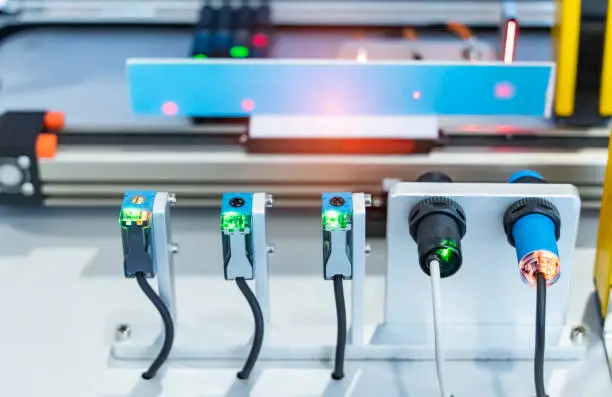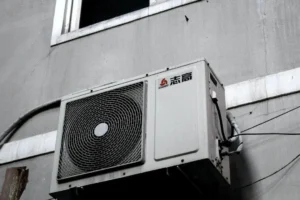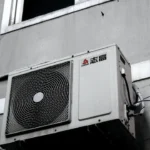In modern industrial automation, sensors help maintain high levels of accuracy, safety, and efficiency. One crucial sensor is proximity sensors, which allow for the non-contact detection of an object’s presence or absence. Choosing a proximity sensor manufacturer with a reputation for both reliability and quality features is important for the sustainability of automation projects. For companies selling parts in bulk, this typically translates to working with seasoned automation spare parts suppliers who have a grasp on industrial standards and application requirements.
This guide aims to assist B2B companies in evaluating different manufacturers of proximity sensors by providing actionable tips and outlining important factors.
The Importance of Proximity Sensors in Automation
Proximity sensors have a broad scope within industrial functions, from assembly lines and robotics to material handling and packaging. The sensor detects metallic or non-metallic objects within the set range and subsequently carries out set instructions, like stopping the machine, counting products, or opening a gate.
The following are some types of proximity sensors:
- Inductive sensors (detecting metal objects)
- Capacitive sensors (detecting non-metallic objects)
- Ultrasonic sensors (detecting objects at greater distances)
- Photoelectric sensors (detecting objects using light)
Since these sensors are crucial for the performance and safety of machines, selecting a dependable proximity sensor supplier as well as the correct automation spare parts suppliers can influence significantly on efficiency, downtimes, and maintenance expenditures.
Primary Factors for Choosing a Proximity Sensor Supplier
Proximity sensors like any other component, for extensive or mission critical integrations, especially in automation frameworks need to be of high grade quality and consistency without relenting. Here are some points worth considering:
Product Quality and Certifications
As with other types of products, work with manufacturers who follow international standards such as ISO 9001 for quality measures. Also ensure that the sensors are CE, UL, or RoHS certified. These certifications provide evidence that products have met quality benchmarks in safety, environmental impact, and performance. Demand datasheets, test results, and warranties as part of the evaluation procedure.
Customization Capabilities
Every automation approach is different. A reliable proximity sensor supplier should extend their offer to customization of sensors such as to sensing distance, housing material, type of connectors, or even orientation of mounting. This ensures full incorporation of the sensor into the system.
Evaluation And Testing Methods
Have the manufacturer provided you with their testing procedures? Do they test for temperature testing, water and dust ingress (IP rating), electromagnetic compatibility, and vibration? These parameters are very critical in industries like automotive, food processing, or heavy machinery, where the environments are often hostile.
Work with knowledgeable automation spare parts suppliers and you will learn from skilled professionals about which manufacturers do testing thoroughly.
Relevance of Technical Support and Documentation
Picking up the right sensor is not only about the hardware. In fact, his documentation together with the manufacturer’s responsive support needs to be concrete. Documentation is as equally essential for successful incorporation as the hardware is.
Accessibility of manuals and CAD files
The automation suppliers CAD drawings are 3D models that are much better than just 2D drawings. Therefore, suppliers should provide comprehensive manuals such as product manuals, wiring diagrams, and installation manuals. These resources enhance accurate guesswork, thus accelerating design and speedy timelines deployment.
Customer service and engineering support should be available.
You want a partner who can provide help with responding to technical questions, troubleshooting, and testing on-site if that is what the problem requires. This is particularly important when the sensors are embedded in high speed or complex automation procedures.
The reliance on collaboration with other spare part suppliers provides means to manufacture devices that may not be initially put together with the foresight of needing to do a lot of PC to streamline the deployment and procurement processes.
Delivery, Scalability, and Supply Chain Stability
Delays or stock shortages during peak periods will ruin even the finest sensor. It is imperative to evaluate a sensor manufacturer’s production capacity, and their ability to meet deadlines.
Transparency of Lead Time and Inventory
A good manufacturer will provide details concerning order quantities and stock availability, as well as provide timelines on when the goods will be delivered. In addition, they will assist you in scaling your operations by helping you plan, which shows them providing forecasting services.
Logistics Network and Global Reach
Check whether the exporter has a logistics framework for international shipping if your project involves multiple sites. For expansion across borders, compliance marks (CE and FCC) are critical.
Ceiling mounted proximity sensors suppliers alongside the automation spare parts suppliers design a robust supply chain that fulfills your needs for getting parts and their delivery in the correct location at the right time.
Reevaluation Using Case Studies and Reputation
Testimonials and remarks offer great value in the selection processes. Don’t simply take the manufacturer’s word for it. Go off the brochures and examine further.
Client Testimonials And Review Us From Industry
Besides business reviews from your field, look for product testimonials. Seek out from them references or provide you with other works they have done for their clients.
Application Success and Their Case Studies
Manufacturers having successful implementations in relevant industries are more likely to comprehend your business needs and problems as something more sophisticated and challenging. Case studies also provide useful information about the durability and efficiency of the sensor in real-life situations.
If your suppliers tell you that the automation spare parts suppliers have procured automation components for them, it is a good sign of trustworthiness.
How Automation Spare Parts Suppliers Influence Choosing A Manufacturer
The supplier of the automation spare parts is also a cut-out guide to the relying users of the machinery and gadget technology because they know best how the spare parts function. They give:
- A list of the manufacturers who are known to provide good services from them.
- Stocks of items needed and giving a chance to look at another brand.
- Recommendations on prescribed uses of the items which are determined from the field.
- Document guidance and document assistance in getting the needed parts quicker.
- Claiming a guarantee and offering other services in selling the components after the transaction.
By selecting these suppliers, it becomes very easy to get machine parts because the processes will be automated and the chances of the project taking extra time because of inaccurate or wrong components are minimized.
The following phrases can be applied to any company in such a way as, “Exclusively for sub-regions, a proximity sensor manufacturer and automation spare parts suppliers have been nominated” showcase the inclusion and collaboration approach of overriding all boundaries in industrial automation.”
Conclusion: Making the Right Choice for Long-Term Success
Choosing the right proximity sensor manufacturer may be one of the most critical decisions in automation as it greatly influences the efficiency, reliability, and scalability of your project. If sensors are evaluated from the perspectives of quality, support, customization, and logistics, the manufacturer choices become easier and can greatly improve ROI and minimize downtime.
Moreover, establishing connections with reputable automation spare parts suppliers provides a wider ecosystem of components, invaluable intelligence, and dependable supply streams. This combination greatly augments successful industrial automation deployment.
In both upgrading an existing system or starting a new automation project, careful assessment should be done to sensor sourcing strategies to ensure they are trusted suppliers with proven reliability, expertise, and a vision for expansion.
Also Read-Selecting the Right Tech Stack for Mobile App Success










